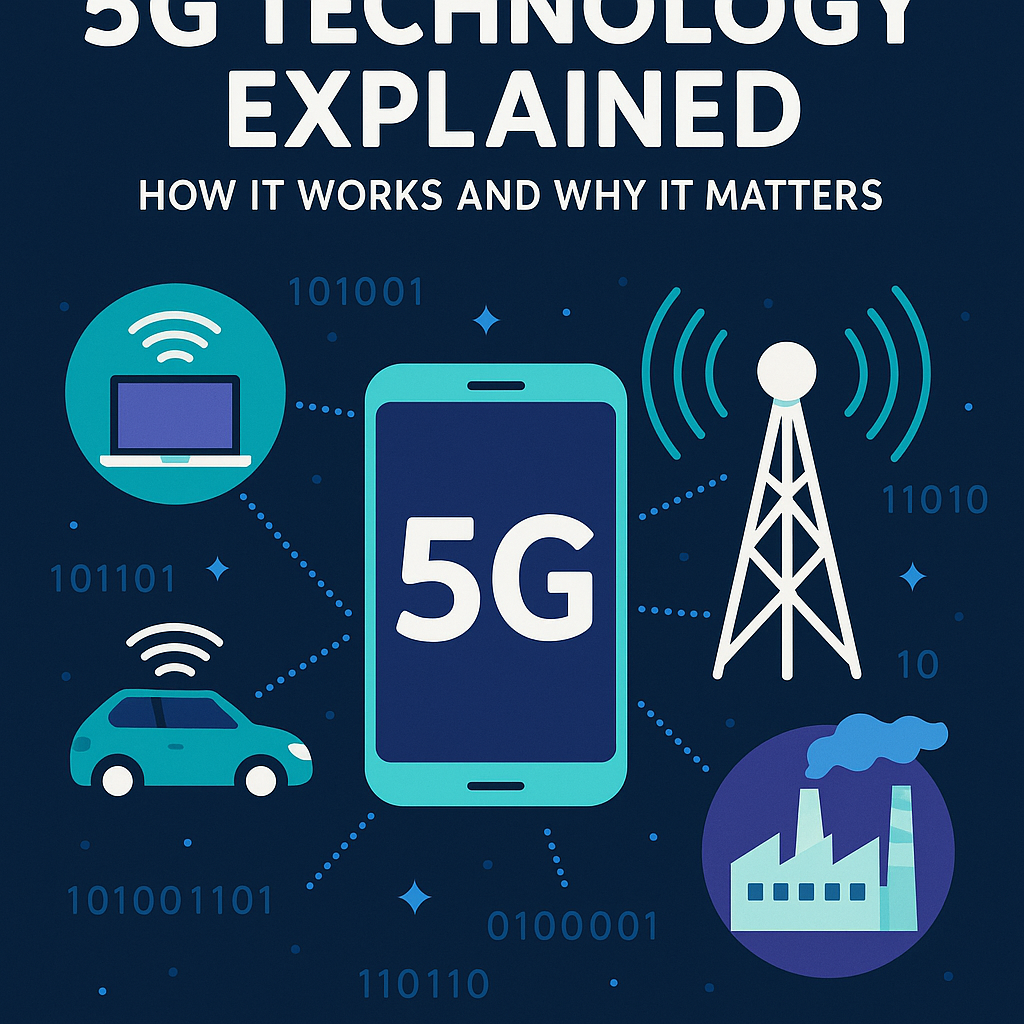The buzz around 5G Technology has been impossible to ignore. From faster download speeds to smarter cities, 5G is poised to transform the way we connect and interact with the world. But beyond the flashy headlines, what exactly is 5G? How does it work, and why should it matter to you?
In this blog, we break down the fundamentals of 5G technology in simple terms and explore the real-world impact it will have on industries and daily life.
What is 5G?
5G stands for “fifth-generation” wireless technology. It’s the next step in the evolution of mobile networks, following 4G (LTE), which brought us high-speed mobile internet. Unlike previous generations, 5G is not just about faster phones. It’s about creating a digital infrastructure that can support a massive number of devices, ultra-low latency, and highly reliable connections.
How Does 5G Work?
At its core, 5G works on a combination of new radio frequencies and advanced network architecture. Here are the key technologies behind it:
- Higher Frequency Bands: 5G uses a broader range of frequencies, including millimeter waves (24 GHz and above), which offer faster speeds and greater capacity. However, these higher frequencies have a shorter range and require more cell towers or small cells.
- Massive MIMO: MIMO (Multiple Input, Multiple Output) technology allows 5G towers to support dozens of antennas at once. This helps increase the capacity and efficiency of the network.
- Beamforming: This technology focuses the wireless signal directly toward a device, rather than broadcasting it in all directions. It improves speed and reduces interference.
- Network Slicing: 5G networks can be “sliced” into multiple virtual networks, each tailored to different needs. For example, one slice could serve emergency services with ultra-reliable low latency, while another powers a smart home.
Why Does 5G Matter?
- Faster Speeds: 5G can offer download speeds up to 10 Gbps — nearly 100 times faster than 4G. This means movies, games, and large files can download in seconds.
- Lower Latency: With latency reduced to as low as 1 millisecond, real-time applications like remote surgery, autonomous driving, and online gaming become far more reliable.
- More Devices: 5G can support over a million devices per square kilometer. This is essential for the growing Internet of Things (IoT), where everything from appliances to traffic lights can be connected.
- Smart Cities and Automation: From traffic management to public safety and energy systems, 5G will be a key enabler of smart infrastructure.
- Economic Growth: Analysts expect 5G to contribute trillions to the global economy in the next decade, driving innovation in fields like healthcare, manufacturing, logistics, and education.
Challenges and Considerations
Despite its potential, 5G deployment faces several challenges:
- Infrastructure Costs: Rolling out 5G requires massive investment in new towers, fiber optics, and hardware.
- Device Compatibility: Not all phones and devices are 5G-ready. Consumers need new hardware to access 5G networks.
- Health and Privacy Concerns: While there’s no scientific evidence linking 5G to health risks, some communities remain skeptical. Additionally, more connected devices mean greater data privacy concerns.
Conclusion
5G is more than just a faster network—it’s the foundation for the future of connectivity. As the technology matures and becomes more widespread, it will redefine industries, improve everyday conveniences, and unlock opportunities we haven’t yet imagined.
Whether you’re a tech enthusiast, a business owner, or just someone curious about the next big thing, understanding 5G is a step toward embracing the connected world ahead.



